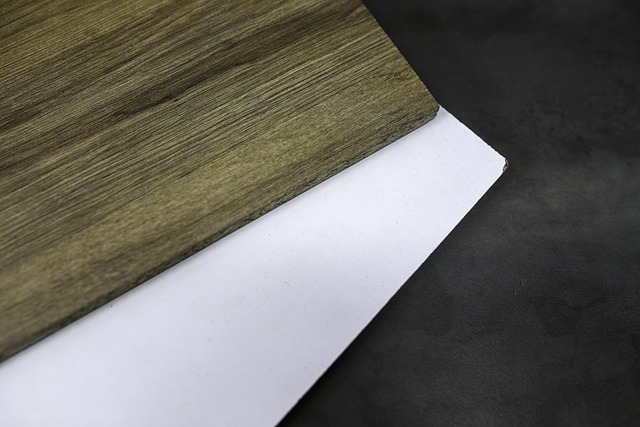Custom glulam beam costs vary based on dimensions, material type, application, production methods, and features. Larger sizes and specialized finishes increase expenses. Material selection, from common to exotic woods, influences pricing. Glue Laminated Beam Dimensions impact strength, load capacity, and manufacturing complexity. Understanding these factors ensures budget-friendly structural solutions for diverse projects, offering long-term savings through durability and efficient material use.
“In today’s construction landscape, custom glulam beams are gaining popularity for their aesthetic appeal and structural integrity. Understanding the cost of these tailored wood elements is crucial for architects and builders. This comprehensive guide delves into the factors influencing glulam beam pricing, from standard dimensions and material choices to fabrication techniques and installation. By exploring these aspects, we aim to equip readers with insights into budgeting for custom glulam beams, considering both initial expenses and long-term savings.”
- Understanding Glulam Beam Costs: Factors at Play
- Standard Sizes and Their Price Impact
- Material Selection: A Cost Driver
- Fabrication Techniques and Their Effects
- Installation Considerations for Budgeting
- Long-Term Savings vs Customization Expense
Understanding Glulam Beam Costs: Factors at Play

Understanding Glulam Beam Costs: Factors at Play
The cost of custom glue laminated beams, or glulam beams, can vary greatly based on several key factors. When specifying glulam beam dimensions, it’s crucial to consider not just the physical size and material type, but also the specific application requirements, production methods, and any special features required. For instance, larger beam dimensions typically cost more due to the increased amount of material needed and the complexity of manufacturing processes.
Best practices for glulam beam sizing involve balancing structural integrity with economic efficiency. Dimensions for structural glue lam beams should be tailored to support the intended loads while minimizing waste. Additionally, factors like finish requirements (e.g., smooth versus rough surfaces) and any necessary pre-drilling or notching can impact costs. To ensure you’re getting a fair price, it’s helpful to compare quotes from multiple suppliers and ask about their specific manufacturing processes. Give us a call at (607) 369-9341 for more insights into managing glulam beam costs effectively.
Standard Sizes and Their Price Impact

When considering the cost of custom glue laminated beams (glulam), understanding standard sizes and their corresponding prices is essential. Glulam beam dimension selection plays a significant role in determining the overall expense, as different dimensions offer varying levels of structural integrity and aesthetic appeal. The typical glulam beam dimensions chart includes a range of widths and thicknesses to accommodate various construction projects, from residential to commercial buildings.
The glued lam beam width and thickness options directly impact the price point. Wider beams often provide greater strength and stability but may come at a higher cost compared to thinner profiles. Similarly, thicker glulam beams are more substantial and durable but typically carry a premium over their thinner counterparts. As a result, project budgets should be mindful of these variations in glulam beam dimension selection, ensuring that the chosen dimensions align with structural requirements while considering the financial implications. For personalized guidance on glulam beam dimensions and pricing, give us a call at (607) 369-9341.
Material Selection: A Cost Driver

When considering the cost of custom glue laminated (glulam) beams, Material Selection plays a significant role. The choice of wood species, grade, and finish can greatly impact the overall expense. For instance, harder woods like Douglas fir or spruce-pine-fir (SPF) are commonly used in glulam construction due to their strength and availability. However, these materials tend to be more expensive than softer alternatives. Additionally, specialized treatments or finishes required for specific projects, such as fire ratings or insect resistance, will add to the cost.
Designing with glue laminated beams offers a range of dimensions and thickness options, allowing for flexibility in structural design. Standard glulam beam measurements typically vary based on intended use, spanning requirements, and load capacity. While these standard measurements provide a starting point, custom sizes can be produced to meet unique architectural visions. To explore your options and find the best value for your project, visit us at unalam.com.
Fabrication Techniques and Their Effects

The fabrication techniques employed in producing custom glue laminated beams (glulam) significantly impact their overall cost and structural integrity. One of the primary factors is the glue laminated beam dimensions selected, as larger or more complex sizes often require specialized equipment and skilled labor. For instance, crafting glulam beams with wider spans or greater depths necessitates advanced machinery to ensure precision and maintain structural consistency throughout.
Additionally, understanding engineered wood glue lam beam specs is crucial for determining the load capacity charts associated with these beams. Different fabrication methods can result in varying strength-to-weight ratios, affecting their suitability for specific construction projects. To find out more about glulam beam load capacities, visit us at 18 Clifton St, Unadilla, NY 13849, where our experts can guide you through the intricacies of these engineered wood solutions and their diverse applications.
Installation Considerations for Budgeting

When budgeting for custom glulam beams, it’s crucial to consider various installation factors that can impact overall costs. Dimensions for structural glue lam beams, such as width and thickness, play a significant role in pricing due to material requirements and labor involved. It’s important to note that larger glue lam beam sizes may necessitate specialized equipment and skilled installers, adding to the project expense.
Additionally, the complexity of the installation process can influence costs. Unique beam layouts or intricate design elements may require additional measuring, cutting, and assembly work. As a professional with expertise in these matters, we can guide you through selecting the appropriate glulam beam size chart based on your structural needs while ensuring cost-effectiveness. Give us a call at (607) 369-9341 to discuss dimensions for structural glue lam beams and how glued lam beam width and thickness choices can impact your project’s bottom line.
Long-Term Savings vs Customization Expense

While custom glulam beams may initially carry a higher price tag than their standardized counterparts, considering long-term savings can be a game-changer. These structural elements are designed to last decades with minimal maintenance, making them a cost-effective choice for both commercial and residential projects. The longevity of a glulam beam translates into reduced replacement costs and less downtime during repairs or renovations.
Furthermore, customization options allow architects and engineers to specify exact dimensions, such as those found in the wooden glue lam beam dimensions guide, tailored to project needs. While this level of personalization comes at an expense, it ensures efficient use of materials, minimizing waste often associated with standard beams. To learn more about how glulam beams can benefit your next construction endeavor, give us a call at (607) 369-9341. Explore the various glulam beam width variations to discover the perfect fit for your unique structural requirements.
When considering custom glulam beams, understanding the contributing factors to their cost is essential. From material selection and fabrication techniques to installation and long-term savings, each element plays a role in determining price. While standard glulam beam dimensions may offer economies of scale, customization allows for unique structural solutions. By weighing the benefits against the expense, builders and designers can make informed decisions, ensuring projects remain both structurally sound and financially viable. Remember, navigating these factors is key to optimizing your budget and creating lasting architectural elements.













